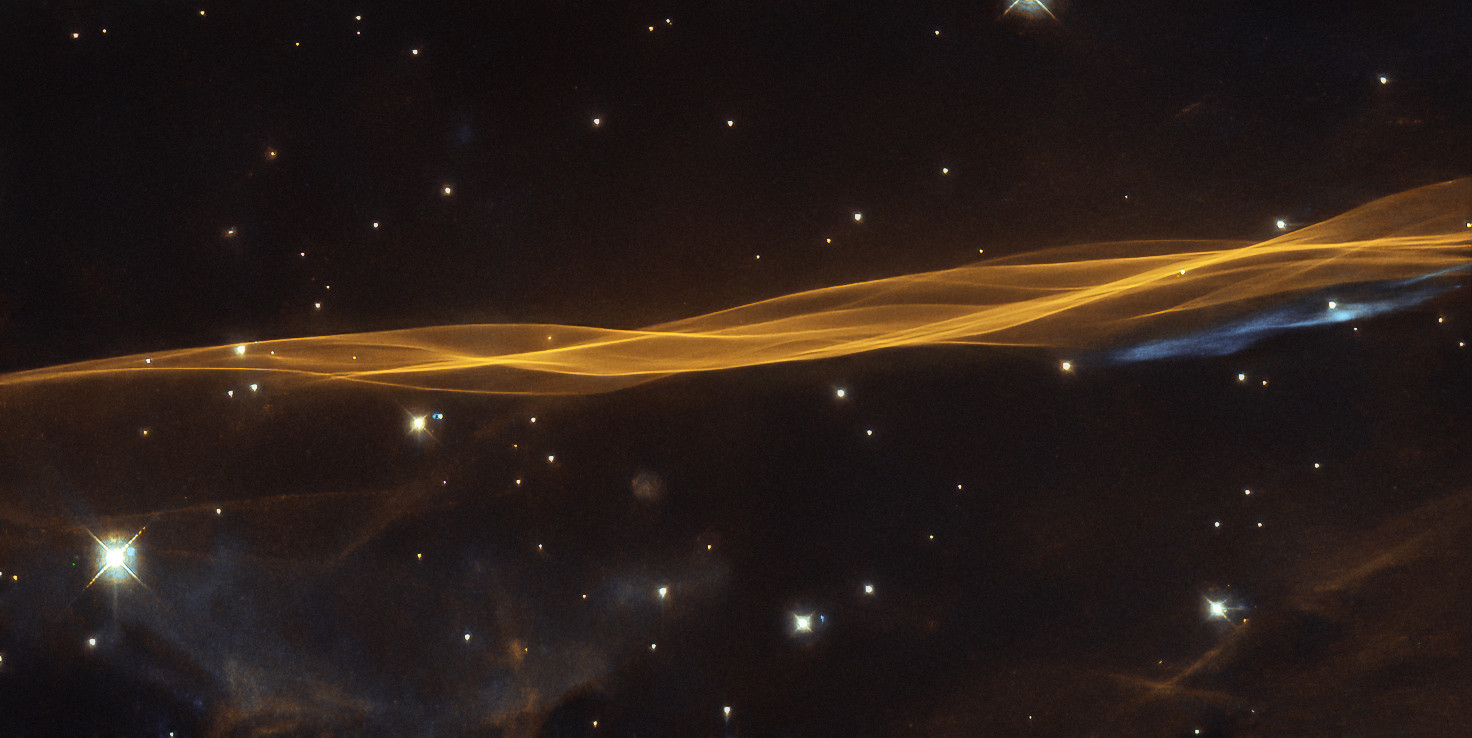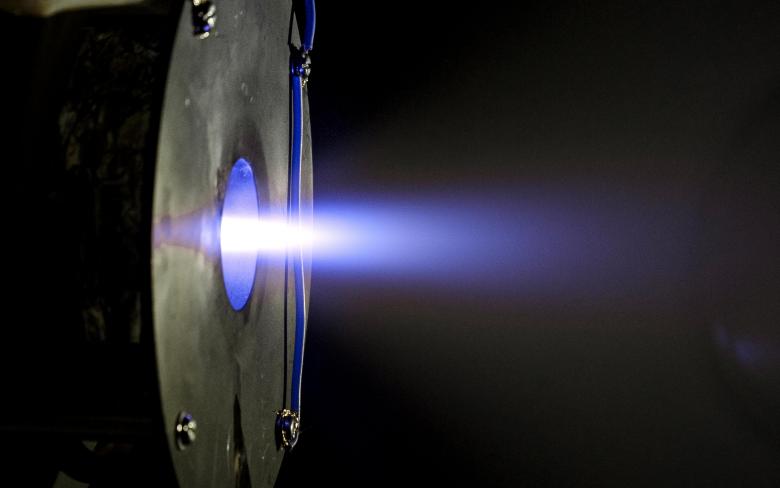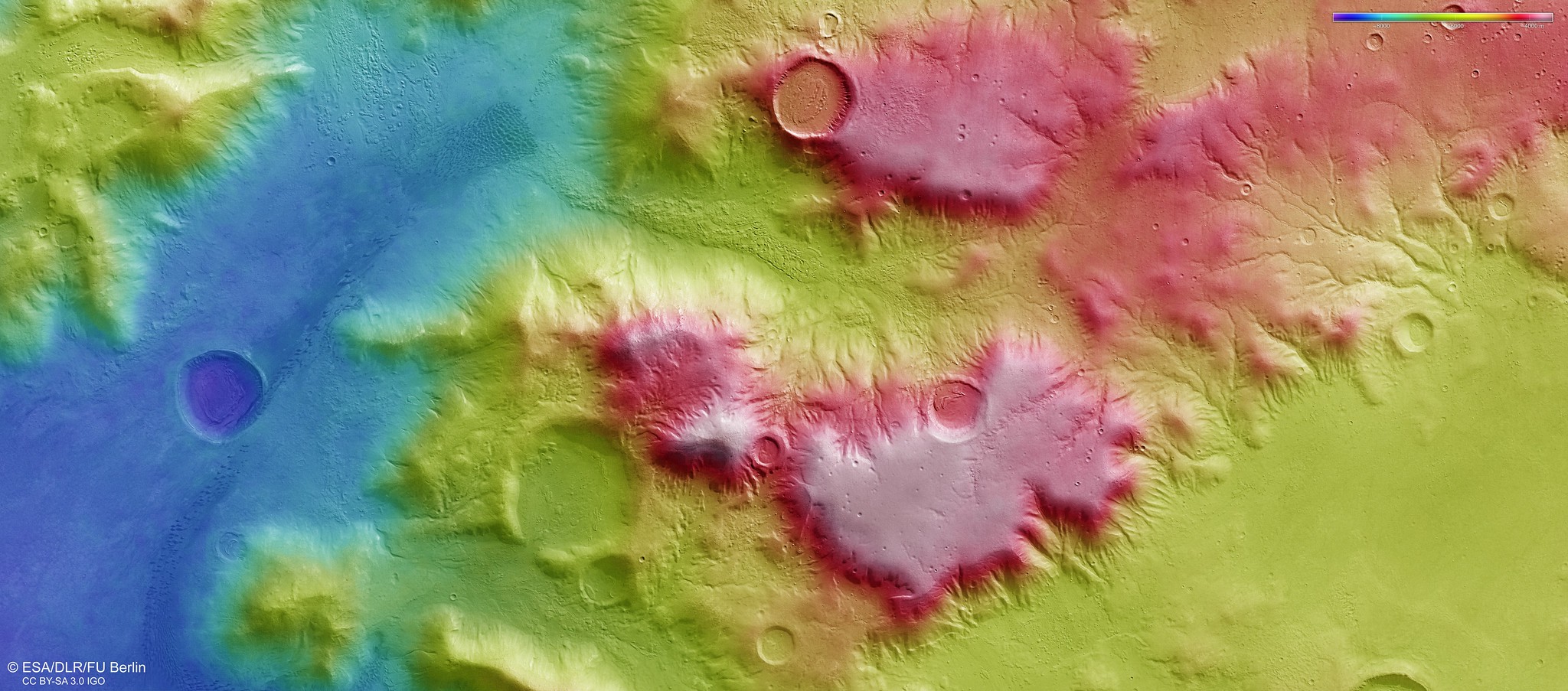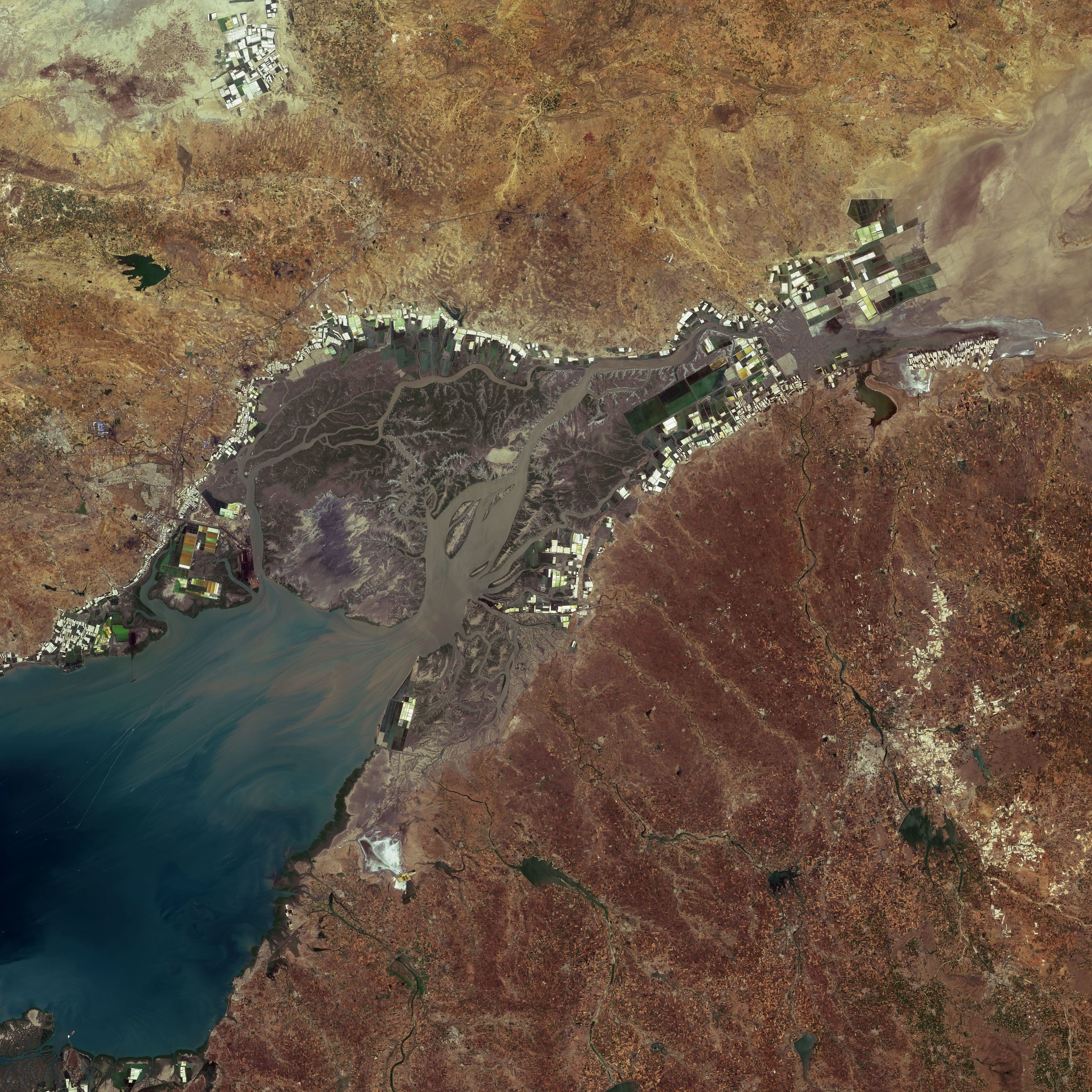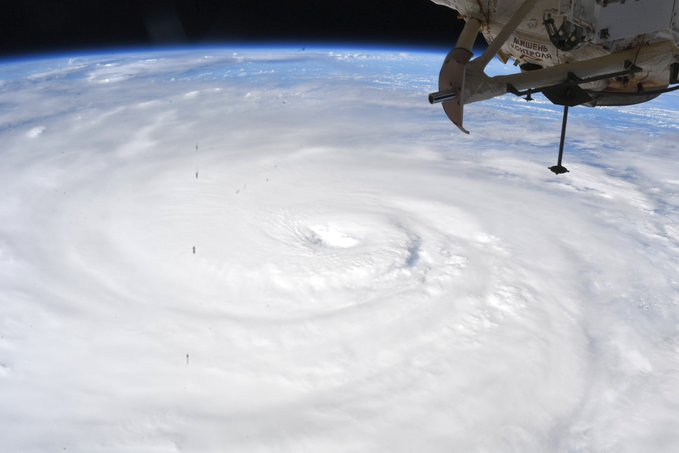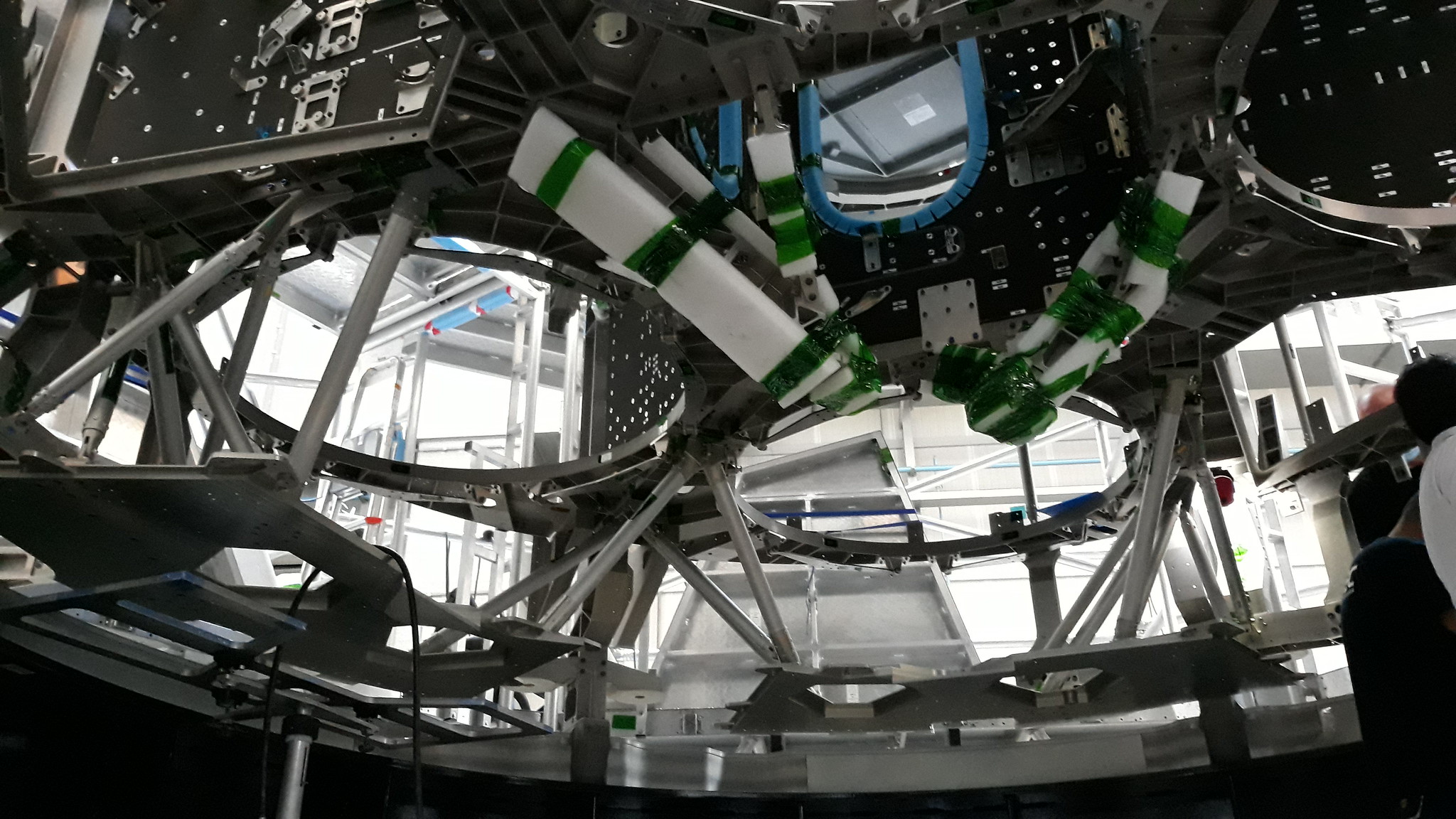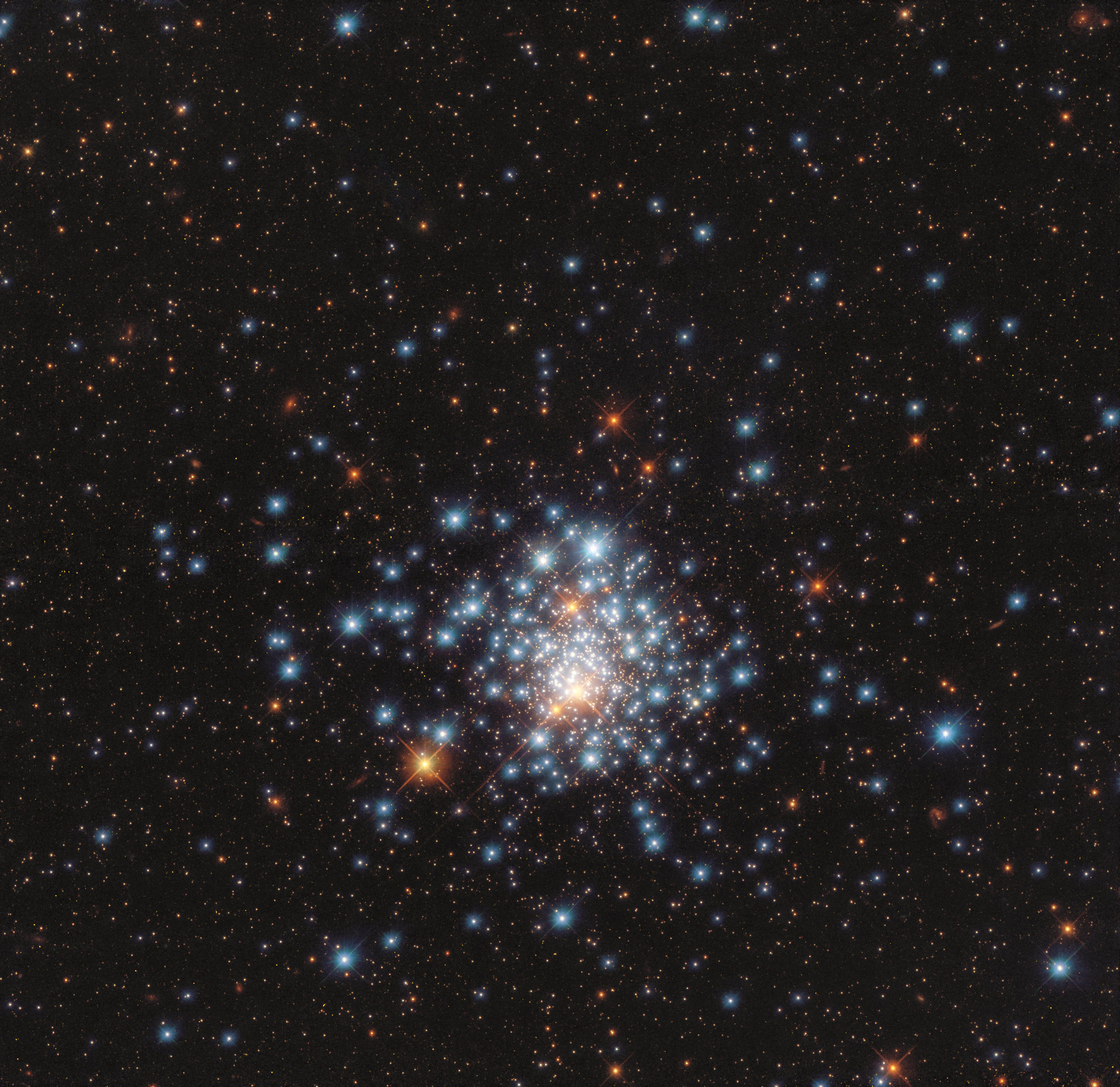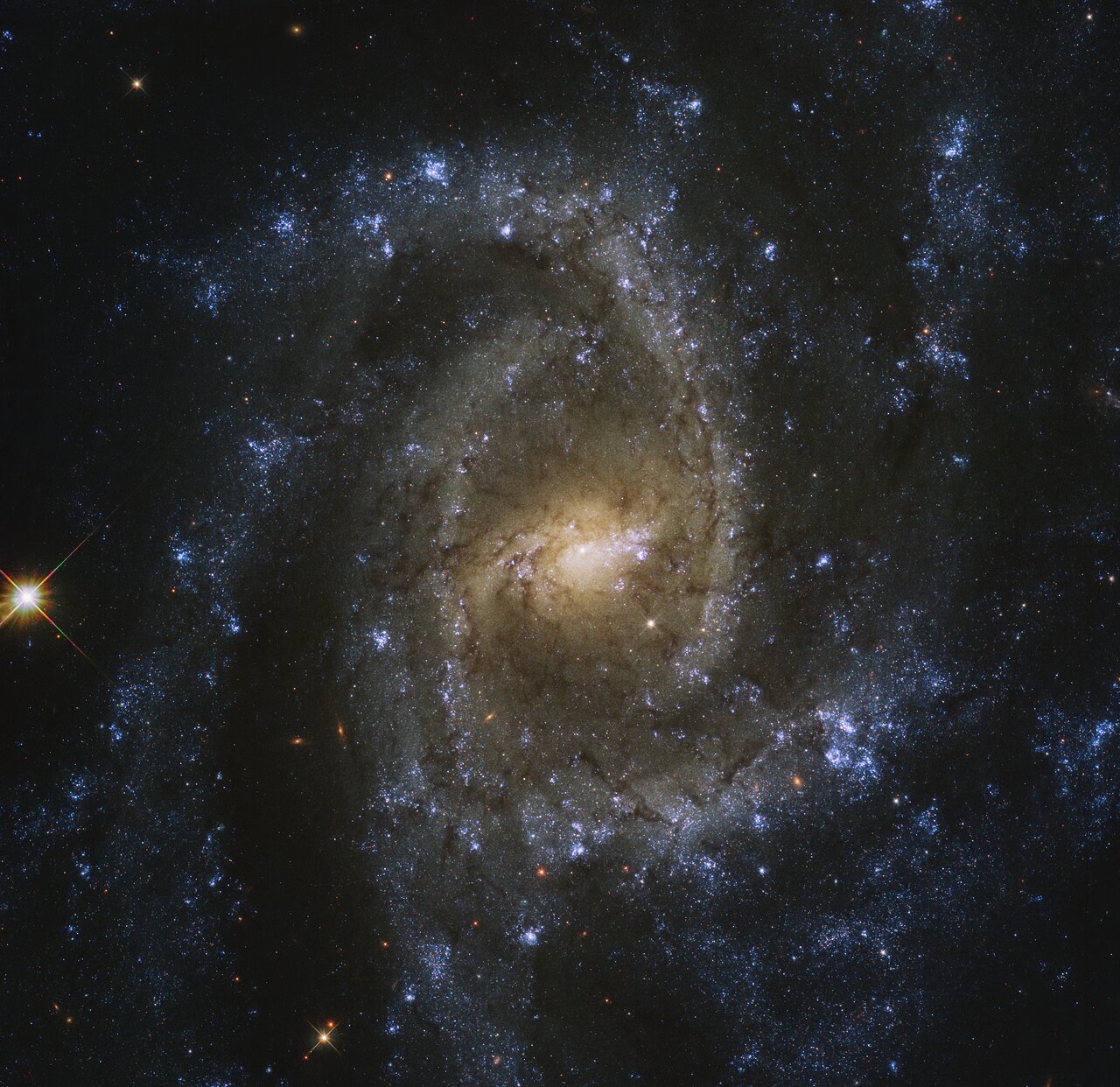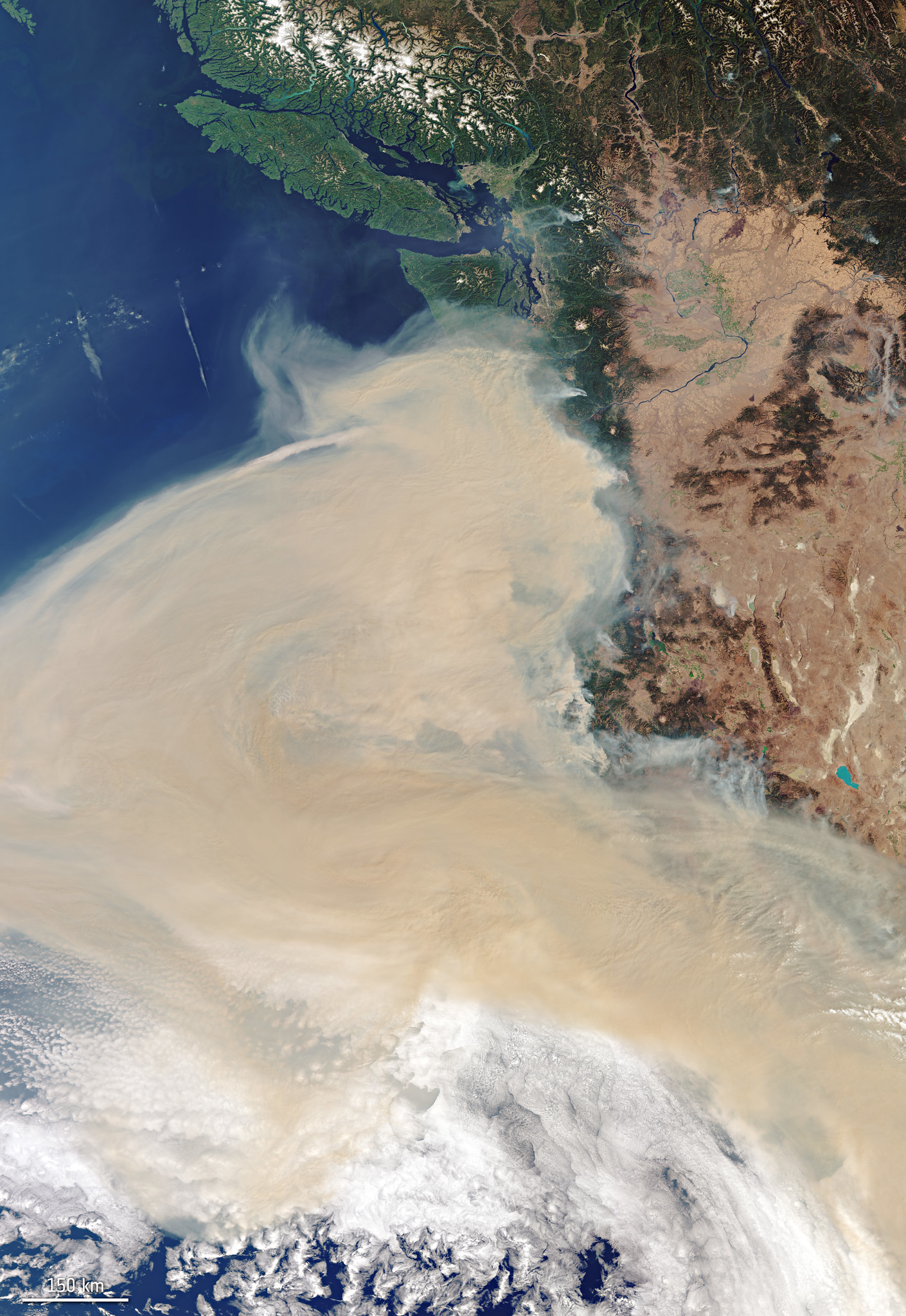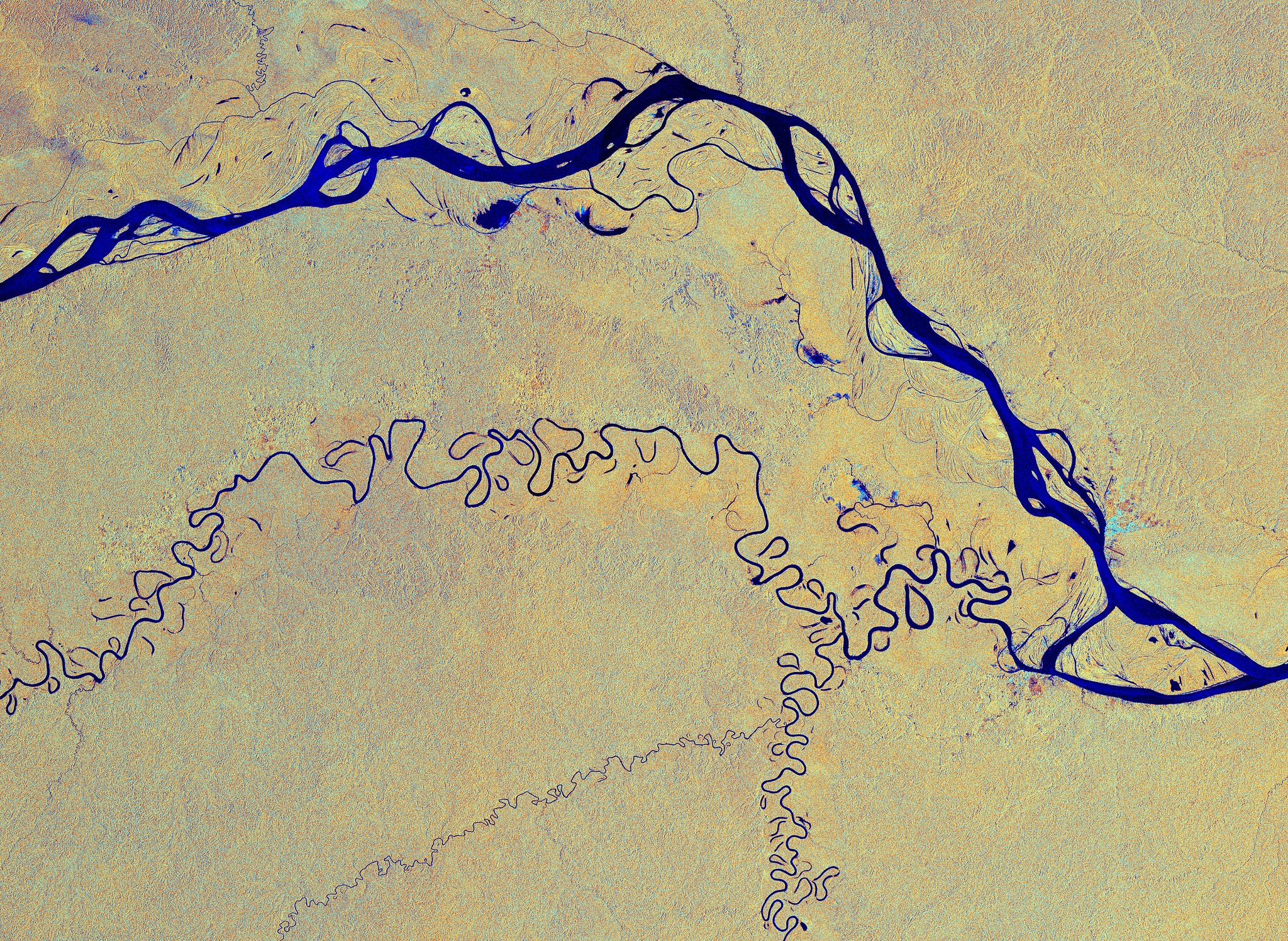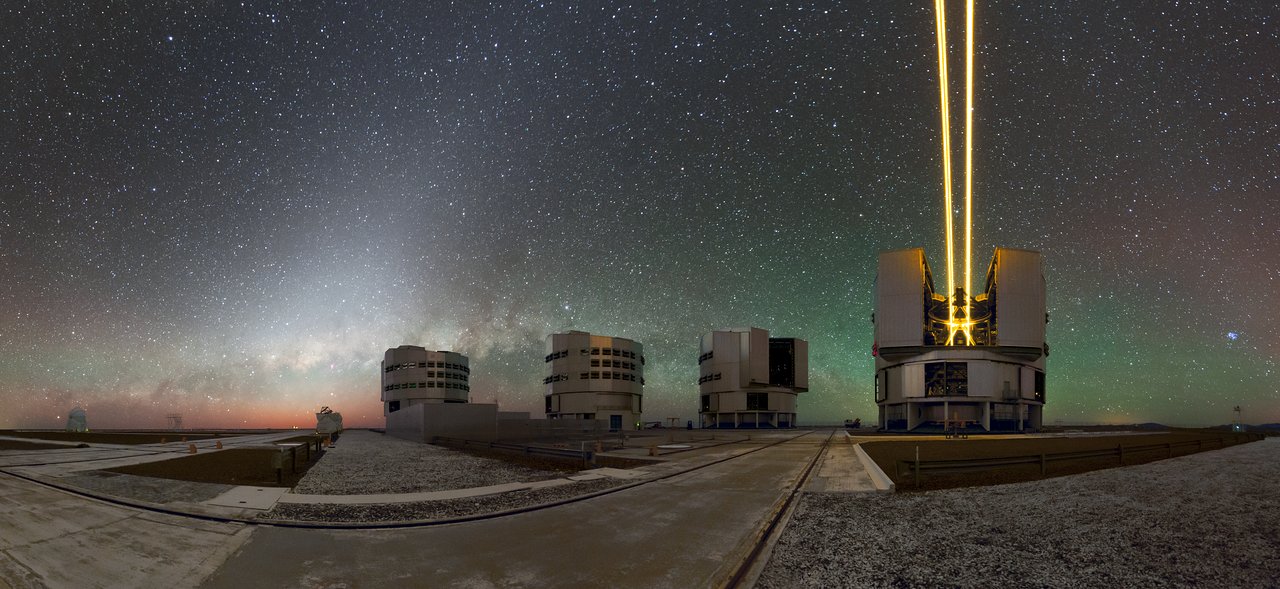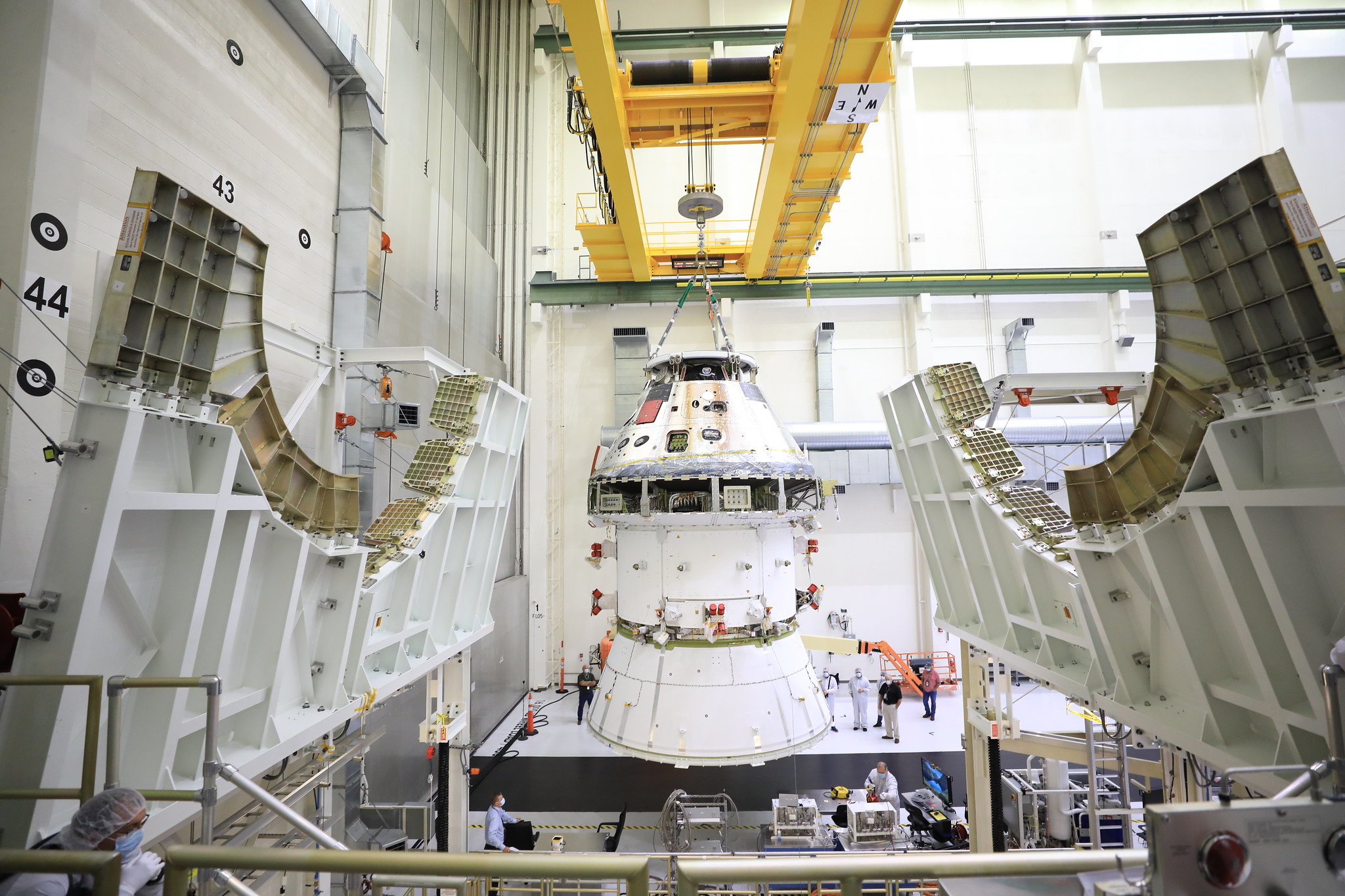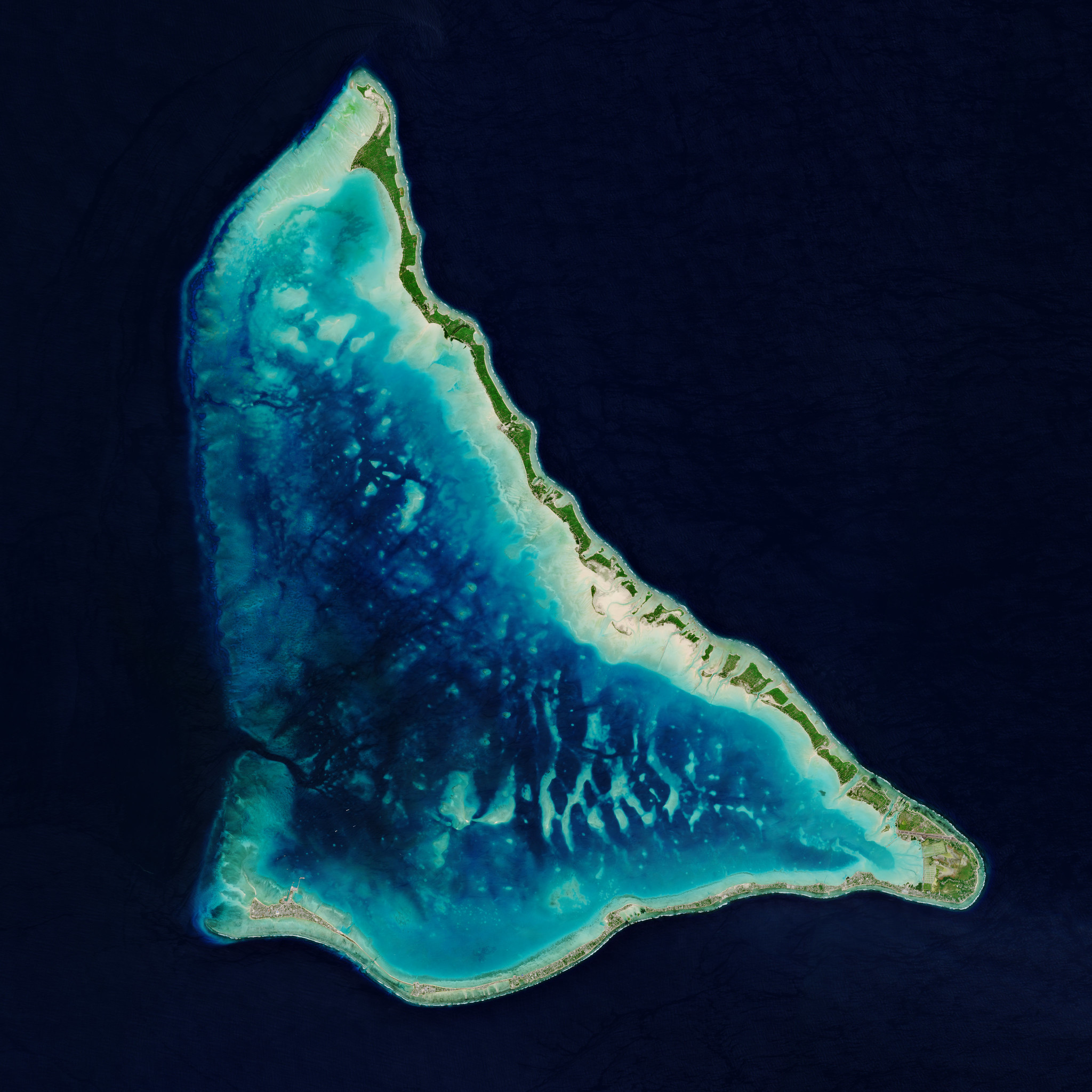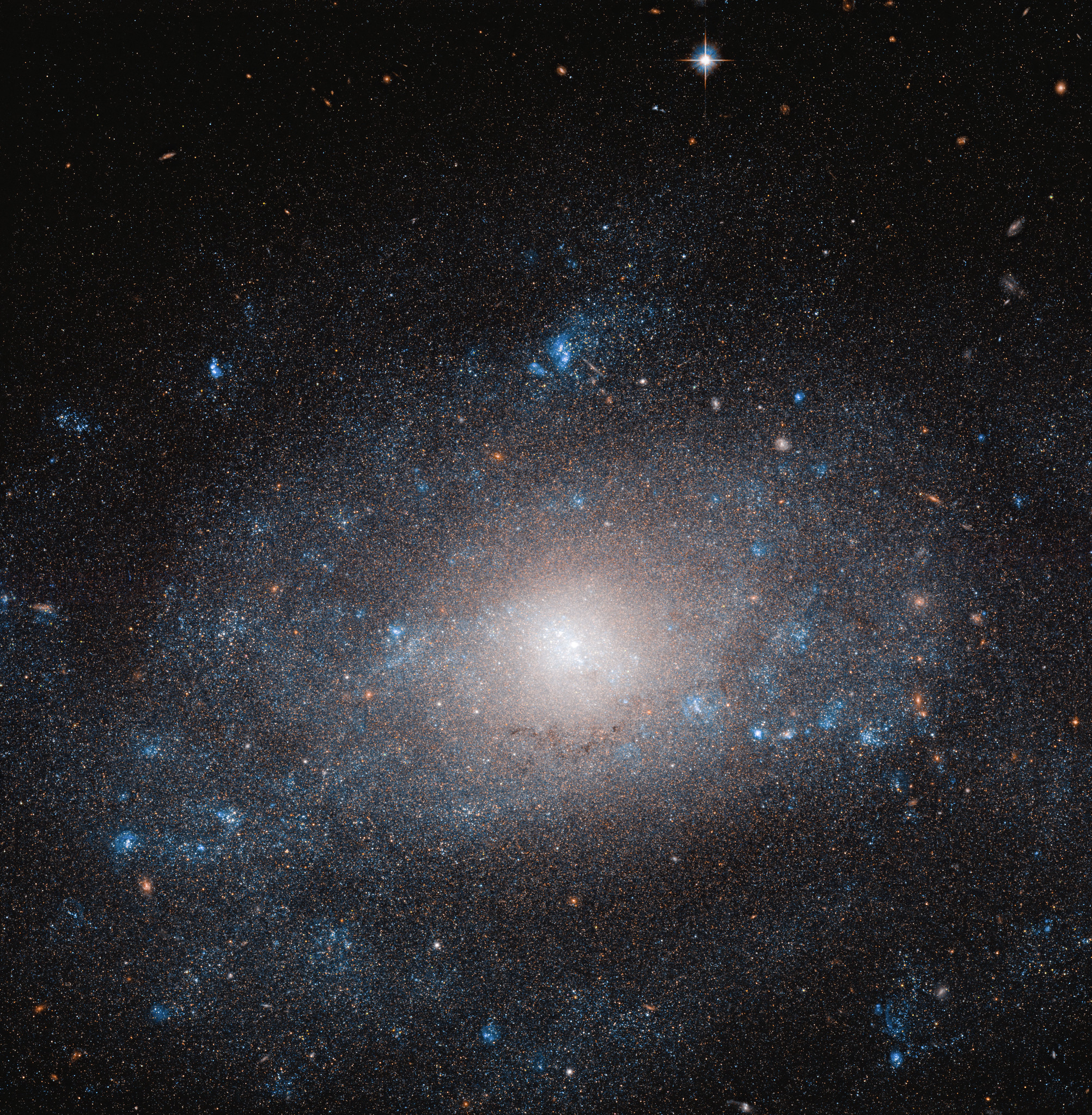Image of the Day 2020 Archive
September 2020
Riding a blast wave
Tuesday, September 1, 2020: This brilliant streak of light is a small section of the Cygnus supernova blast wave, as spotted by the Hubble Space Telescope. The blast, which is about 2,400 light-years away, was from a supernova explosion that tore apart a dying star 20 times more massive than our sun between 10,000 and 20,000 years ago.
Plasma propulsion
Wednesday, September 2, 2020: The Helicon Plasma Thruster, developed by the European Space Agency by SENER in Spain, completes a test firing in this image. The thruster, which uses high power radio frequency waves to turn propellant into a plasma, is designed to propel small satellites and maintain large megaconstellations of satellites.
The Nereidum Mountain Range
Thursday, September 3, 2020: This color-coded topographic view shows the Nereidum Mountain range, which lies on the surface of Mars in the planet's southern hemisphere. The image shows a region within the mountain range which is a part of the large Argyre impact basin, one of the biggest impact structures on the entire Red Planet.
Earth from space
Friday, September 4, 2020: This image shows the Gulf of Kutch, also known as the Gulf of Kachchh, an inlet of the Arabian Sea along India's west coast. The photo was snapped by the Copernicus Sentinel-2 mission, which is made up of two satellites. Each satellite of the mission has a high-resolution camera on board to allow the satellites to track changes in bodies of water on Earth.
A tilted galaxy
Tuesday, September 8, 2020: The Hubble Space Telescope spied the blue and orange stars of the faint, tilted galaxy NGC 2188, which is estimated to stretch about 50,000 light-years across. The galaxy, thought to be about half the size of the Milky Way, sits in the constellation Columba (the Dove).
Typhoon Haishen
Wednesday, September 9, 2020: NASA astronaut Chris Cassidy took this photograph of Typhoon Haishen from aboard the International Space Station. The typhoon has led to seven million people being ordered to evacuate and, after hitting Japan it reached the Korean peninsula.
A spacecraft's backbone
Thursday, September 10, 2020: This structure is the skeleton, or the frame and base, for the European Service Module that will be part of NASA's Orion spacecraft, which, as part of the agency's Artemis program, will return humans to the moon. This "backbone" for the Orion spacecraft was built in Turin, Italy at Thales Alenia Space.
Breaking space news, the latest updates on rocket launches, skywatching events and more!
Galactic fireworks
Friday, September 11, 2020: These "galactic fireworks" are the colorful stars which make up the globular cluster NGC 1805, as seen in this photo taken by the Hubble Space Telescope. This cluster of thousands of stars is located out at the edge of the large Magellanic Cloud.
A serpent's eye
Monday, September 14, 2020: The spiral galaxy NGC 2835 sparkles out in the head of the constellation Hydra, as seen in this photo taken by the Hubble Space Telescope. The galaxy is is about half as wide as the Milky Way and has a supermassive black hole millions of times more massive than our sun at its center.
West coast wildfires
Tuesday, September 15, 2020: The massive amount of smoke billowing out from California in the U.S. can be seen from space, as you can see in this image taken Sept. 10 by the Copernicus Sentinel-3 satellite. There are as many as 100 wildfires currently raging in California and they have additionally spread into Washington and Oregon.
The Amazon river from space
Wednesday, September 16, 2020: The Copernicus Sentinel-1 satellite captured this image of the Amazon River snaking its way through the Amazon rainforest in South America from space. The colors in this image come from two polarizations from the Copernicus Sentinel-1 radar mission which have been merged into one image.
Reflecting radio beams
Thursday, September 17, 2020: This metal-mesh antenna reflector was created as part of the European Space Agency's AMPER (Advanced techniques for mesh reflector with improved radiation pattern performance) project. Researchers are developing this mesh reflector technology to advance the performance and capabilities of large antennas.
Jupiter's striking storms
Friday, September 18, 2020: This new, stunning image of Jupiter, taken by the Hubble Space Telescope, was captured on Aug. 25, 2020 and shows the planet's turbulent, swirling storms. In the photo, you can see the ripples in the planet's atmosphere, Jupiter's famous Great Red Spot and the planet's striking colors.
Guiding light
Monday, September 21, 2020: The Unit Telescope 4 of the Very Large Telescope at the European Southern Observatory in Chile fires its "laser guide stars" at the night sky as part of the telescope's adaptive optics system.
Unit 4 is one of four separate 8.2-meter telescopes that make up the Very Large Telescope, which in turn is part of the European Southern Observatory high up in Chile's Atacama Desert. The telescope's adaptive optics system users powerful lasers as guide stars to help its adaptive optics system correct for the distortion of the Earth's atmosphere in astronomical observations.
Enceladus up-close
Tuesday, September 22, 2020: This global infrared mosaic of Enceladus, one of Saturn's moons, was made using data from the Cassini spacecraft, which orbited Saturn from 2004 to 2017. This image shows five different infrared views of Enceladus, the moon's Saturn-facing side, its trailing side and its North and South pole.
Flowering stellar wind
Wednesday, September 23, 2020: Stellar winds from the star R Aquilae form a number of shapes, coming together to resemble flower petals. This image was captured by the Atacama Large Millimeter/submillimeter array in Chile as part of the ATOMIUM project.
Orion spacecraft
Thursday, September 24, 2020: This is the first Orion spacecraft that will fly to the moon, sitting in the Neil Armstrong Operations and Checkout facility at NASA's Kennedy Space Center. This craft will fly as part of NASA'a Artemis program, which aims to return humans to the lunar surface in 2024.
Tarawa Atoll from space
Friday, September 25, 2020: The Tarawa Atoll, a remote Pacific nation in the Republic of Kiribati, can be seen from space in this image captured by the Copernicus Sentinel-2 mission. Kiribati is an independent island nation spreading out 1351357 square miles (3.5 million square kilometers) of the ocean with a total land area of just 309 sq miles (800 sq km).
Dark matter in the Great Bear
Monday, September 28, 2020: On the tail of the Great Bear in the Ursa Major constellation, the spiral galaxy NGC 5585 can be seen here, as imaged by the Hubble Space Telescope. The galaxy is made up of stars, dust and gas clouds and an abundance of dark matter.
Expedition 64 prepares for flight
Tuesday, September 29, 2020: NASA astronaut Kate Rubins and Roscosmos cosmonauts Sergey Kud-Sverchkov and Sergey Ryzhikov are the three astronauts set to launch Oct. 14 to the International Space Station as part of Expedition 64. Here the astronauts can be seen during a fit check inside the Soyuz MS-17 spacecraft at the Baikonur Cosmodrome in Kazakhstan.
ExoMars moves to France
Wednesday, September 30, 2020: Last Sunday (Sept. 20), the European Space Agency's ExoMars mission was moved from the Thales Alenia Space facilities to Cannes, France. The mission includes the Rosalind Franklin rover, which has a specialized drill to gather samples from beneath the Martian surface.
Can't find the date you're looking for? It may have been a weekend or holiday, when we don't normally update our Image of the Day.
Click 'NEXT PAGE' below for October >

Space.com is the premier source of space exploration, innovation and astronomy news, chronicling (and celebrating) humanity's ongoing expansion across the final frontier. Originally founded in 1999, Space.com is, and always has been, the passion of writers and editors who are space fans and also trained journalists. Our current news team consists of Editor-in-Chief Tariq Malik; Editor Hanneke Weitering, Senior Space Writer Mike Wall; Senior Writer Meghan Bartels; Senior Writer Chelsea Gohd, Senior Writer Tereza Pultarova and Staff Writer Alexander Cox, focusing on e-commerce. Senior Producer Steve Spaleta oversees our space videos, with Diana Whitcroft as our Social Media Editor.
